-
 Bitcoin
Bitcoin $84,912.1002
0.22% -
 Ethereum
Ethereum $1,597.4099
0.99% -
 Tether USDt
Tether USDt $1.0000
0.00% -
 XRP
XRP $2.0848
1.56% -
 BNB
BNB $592.5467
0.52% -
 Solana
Solana $138.6661
3.38% -
 USDC
USDC $1.0000
0.02% -
 Dogecoin
Dogecoin $0.1597
3.32% -
 TRON
TRON $0.2416
-1.86% -
 Cardano
Cardano $0.6327
3.32% -
 UNUS SED LEO
UNUS SED LEO $9.2836
0.56% -
 Chainlink
Chainlink $12.7262
1.41% -
 Avalanche
Avalanche $19.2768
1.31% -
 Stellar
Stellar $0.2442
1.08% -
 Toncoin
Toncoin $2.9950
1.32% -
 Shiba Inu
Shiba Inu $0.0...01231
4.65% -
 Hedera
Hedera $0.1668
2.11% -
 Sui
Sui $2.1474
1.41% -
 Bitcoin Cash
Bitcoin Cash $337.5269
2.68% -
 Hyperliquid
Hyperliquid $17.5726
3.68% -
 Polkadot
Polkadot $3.7336
2.05% -
 Litecoin
Litecoin $76.5245
1.70% -
 Dai
Dai $1.0001
0.02% -
 Bitget Token
Bitget Token $4.4585
2.30% -
 Ethena USDe
Ethena USDe $0.9993
0.01% -
 Pi
Pi $0.6558
7.05% -
 Monero
Monero $214.1926
-0.69% -
 Uniswap
Uniswap $5.2567
1.90% -
 Pepe
Pepe $0.0...07325
4.28% -
 OKB
OKB $50.6926
1.82%
What is the "Merkle tree" in blockchain? How does it ensure data integrity?
Merkle trees efficiently verify blockchain data integrity using cryptographic hashing. A Merkle root acts as a dataset's fingerprint, enabling faster verification than checking individual transactions, crucial for lightweight clients and scalability.
Mar 12, 2025 at 12:20 pm
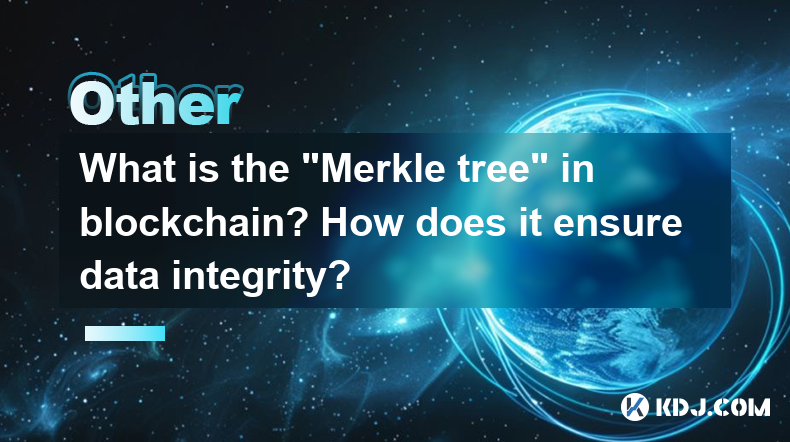
Key Points:
- Merkle trees are hierarchical data structures used in blockchains to efficiently verify data integrity.
- They employ cryptographic hashing to create a compact representation of a large dataset.
- Merkle roots act as a single, verifiable fingerprint of the entire dataset.
- Verification is significantly faster and more efficient than checking every single transaction.
- Merkle trees are crucial for lightweight clients and efficient blockchain operation.
What is a Merkle Tree in Blockchain?
A Merkle tree, also known as a hash tree, is a fundamental data structure used in blockchain technology to ensure the integrity of large datasets, such as the collection of transactions within a block. It's a binary tree where each leaf node represents the cryptographic hash of a single piece of data (e.g., a transaction). Parent nodes are calculated by hashing the concatenation of their child nodes' hashes. This process continues recursively until a single hash at the top is generated – the Merkle root.
How Does a Merkle Tree Ensure Data Integrity?
The power of a Merkle tree lies in its ability to efficiently verify data integrity. Any alteration to a single piece of data (a transaction, for instance) will propagate changes up the tree, resulting in a different Merkle root. This makes it easy to detect tampering. A blockchain node only needs to compare the Merkle root provided with the block's header against the Merkle root it independently calculates from the block's transactions. A mismatch indicates data corruption or manipulation.
Creating a Merkle Tree: A Step-by-Step Guide
Let's illustrate with a simplified example of four transactions (T1, T2, T3, T4).
- Step 1: Hashing Individual Transactions: Each transaction is individually hashed using a cryptographic hash function (like SHA-256) producing four hash values (H1, H2, H3, H4).
- Step 2: Pairing and Hashing: The hash values are paired (H1 with H2, H3 with H4). The concatenation of each pair is then hashed, resulting in two new hashes (H5, H6).
- Step 3: Recursive Hashing: The process repeats. H5 and H6 are paired, concatenated, and hashed, producing a single hash (H7). H7 is the Merkle root.
This Merkle root acts as a digital fingerprint for the entire set of transactions. Any change to a single transaction will cascade through the tree, altering the final Merkle root.
Merkle Trees and Lightweight Clients
One of the key advantages of Merkle trees is their efficiency. Lightweight clients, with limited storage capacity, don't need to download and store the entire blockchain. Instead, they can download only the Merkle root and the specific transaction hashes they are interested in. They can then verify the integrity of their selected transactions by requesting the relevant branches of the Merkle tree from a full node. This dramatically reduces the storage and bandwidth requirements for lightweight clients.
Merkle Proofs and Verification
To verify a specific transaction, a Merkle proof is used. This is a compact path from the transaction's leaf node to the Merkle root. It contains the hashes of the siblings of each node along the path. A client can use this proof to reconstruct the Merkle root and verify the transaction's inclusion in the block without needing the entire dataset. This process significantly reduces the data required for verification.
Merkle Trees and Blockchain Security
The use of Merkle trees contributes significantly to the security and integrity of blockchain systems. The cryptographic hashing ensures that even a minor alteration will be immediately detectable. The Merkle root acts as a concise and reliable summary of the entire dataset, making it a vital component of blockchain technology. It is a fundamental component of the consensus mechanisms employed by many blockchains, ensuring trust and transparency.
Merkle Trees and Scalability
The efficiency of Merkle trees also contributes to blockchain scalability. The compact nature of Merkle proofs allows for faster verification of transactions, particularly beneficial in high-throughput blockchain networks. This efficient verification mechanism is essential for handling the large volume of transactions expected in a widely adopted blockchain system.
Frequently Asked Questions
Q: What is the difference between a Merkle tree and a hash chain?
A: A hash chain is a linear structure where each hash depends only on the previous one. A Merkle tree is a tree structure, allowing for more efficient verification of subsets of data. A Merkle tree offers better efficiency for verifying individual transactions within a block.
Q: Can Merkle trees be used outside of blockchain technology?
A: Yes, Merkle trees find applications in various fields requiring data integrity verification, including version control systems (like Git) and distributed databases. Their ability to efficiently verify large datasets makes them a versatile tool in various applications beyond blockchain.
Q: What happens if a hash function used in a Merkle tree is compromised?
A: A compromised hash function would undermine the security of the Merkle tree. A new, cryptographically secure hash function would need to be adopted to restore the integrity of the system. The entire structure would need to be recalculated using the new function.
Q: How do Merkle trees handle large numbers of transactions?
A: Even with a vast number of transactions, the Merkle tree remains efficient. The logarithmic nature of the tree structure ensures that the verification process scales well, even with a massive dataset. The height of the tree grows logarithmically with the number of transactions.
Q: Are Merkle trees susceptible to denial-of-service attacks?
A: While Merkle trees themselves are not directly susceptible to denial-of-service attacks, the underlying network infrastructure could be targeted. Appropriate network security measures are essential to protect against such attacks. The efficiency of Merkle trees does not inherently protect against network-level issues.
Disclaimer:info@kdj.com
The information provided is not trading advice. kdj.com does not assume any responsibility for any investments made based on the information provided in this article. Cryptocurrencies are highly volatile and it is highly recommended that you invest with caution after thorough research!
If you believe that the content used on this website infringes your copyright, please contact us immediately (info@kdj.com) and we will delete it promptly.
- Ethena Labs Unveils Converge, a New Layer-1 Blockchain Targeting Tokenized Real-World Assets
- 2025-04-19 12:20:14
- FBI Releases Five Warnings to Help Protect Investors in the Cryptocurrency Space
- 2025-04-19 12:20:14
- Today, the Official Trump ($TRUMP) meme coin tokens have been unlocked, sparking panic among investors.
- 2025-04-19 12:15:14
- Dogecoin (DOGE) Price Prediction: Will the Original Memecoin Reach $1 by Late Summer 2025?
- 2025-04-19 12:15:14
- Resilience is a Distinct Attribute of Solana
- 2025-04-19 12:10:13
- Astar Network Adjusts Its Token Issuance Model to Stabilize APY and Reduce Inflation
- 2025-04-19 12:10:13
Related knowledge

Can ICOs in the blockchain space still make money?
Apr 17,2025 at 08:29pm
The landscape of Initial Coin Offerings (ICOs) in the blockchain space has evolved significantly since their peak in 2017 and 2018. Despite the increased regulatory scrutiny and the rise of alternative fundraising methods like Security Token Offerings (STOs) and Initial Exchange Offerings (IEOs), ICOs can still be a viable way to raise funds and generat...

Can the application of blockchain in supply chain finance bring benefits?
Apr 15,2025 at 04:00pm
Can the application of blockchain in supply chain finance bring benefits? The integration of blockchain technology into supply chain finance has garnered significant attention in the cryptocurrency and financial sectors. This article explores how blockchain can potentially revolutionize supply chain finance, detailing its benefits and providing a compre...
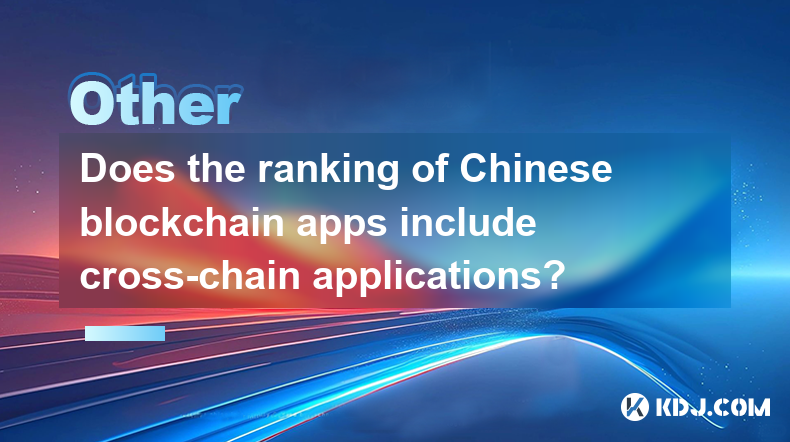
Does the ranking of Chinese blockchain apps include cross-chain applications?
Apr 14,2025 at 04:00pm
The ranking of Chinese blockchain apps is a comprehensive evaluation that takes into account various aspects such as user base, transaction volume, and technological innovation. A pertinent question arises regarding whether these rankings include cross-chain applications. Cross-chain applications, which allow different blockchain networks to interact an...
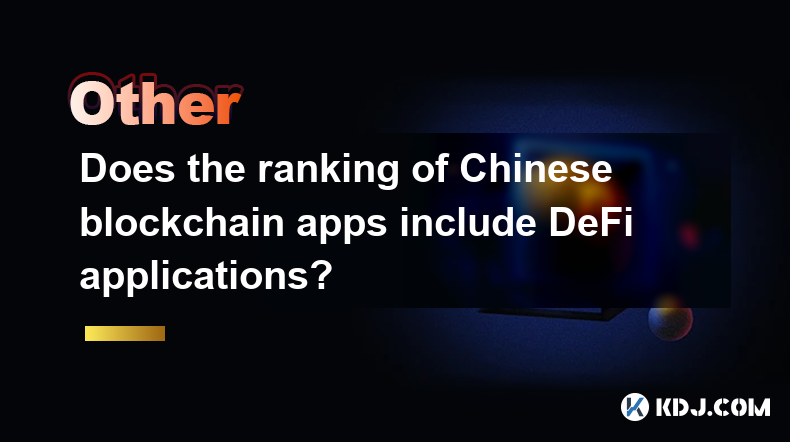
Does the ranking of Chinese blockchain apps include DeFi applications?
Apr 15,2025 at 06:57am
The ranking of Chinese blockchain apps is a comprehensive list that showcases the most popular and influential applications within the cryptocurrency ecosystem. One question that often arises is whether these rankings include DeFi applications. To answer this, we need to delve into the specifics of how these rankings are compiled and what types of appli...
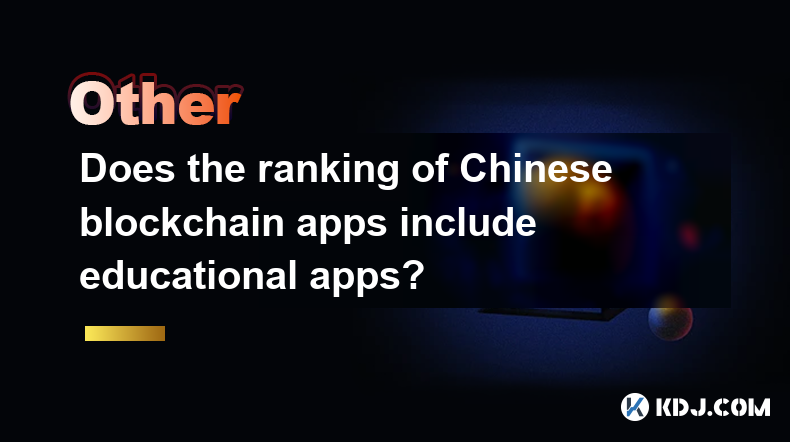
Does the ranking of Chinese blockchain apps include educational apps?
Apr 16,2025 at 03:35am
The ranking of Chinese blockchain apps often includes a variety of categories, from finance and gaming to social networking and beyond. One question that frequently arises is whether these rankings include educational apps. To address this, we need to delve into the specifics of how blockchain apps are categorized and ranked in China, and whether educat...
Does the ranking of Chinese blockchain apps include enterprise-level applications?
Apr 15,2025 at 06:42am
The ranking of Chinese blockchain apps often includes a variety of applications, ranging from consumer-focused to enterprise-level solutions. Understanding the scope and criteria for these rankings is essential to determine if enterprise-level applications are included. This article delves into the specifics of how Chinese blockchain app rankings are co...

Can ICOs in the blockchain space still make money?
Apr 17,2025 at 08:29pm
The landscape of Initial Coin Offerings (ICOs) in the blockchain space has evolved significantly since their peak in 2017 and 2018. Despite the increased regulatory scrutiny and the rise of alternative fundraising methods like Security Token Offerings (STOs) and Initial Exchange Offerings (IEOs), ICOs can still be a viable way to raise funds and generat...

Can the application of blockchain in supply chain finance bring benefits?
Apr 15,2025 at 04:00pm
Can the application of blockchain in supply chain finance bring benefits? The integration of blockchain technology into supply chain finance has garnered significant attention in the cryptocurrency and financial sectors. This article explores how blockchain can potentially revolutionize supply chain finance, detailing its benefits and providing a compre...

Does the ranking of Chinese blockchain apps include cross-chain applications?
Apr 14,2025 at 04:00pm
The ranking of Chinese blockchain apps is a comprehensive evaluation that takes into account various aspects such as user base, transaction volume, and technological innovation. A pertinent question arises regarding whether these rankings include cross-chain applications. Cross-chain applications, which allow different blockchain networks to interact an...

Does the ranking of Chinese blockchain apps include DeFi applications?
Apr 15,2025 at 06:57am
The ranking of Chinese blockchain apps is a comprehensive list that showcases the most popular and influential applications within the cryptocurrency ecosystem. One question that often arises is whether these rankings include DeFi applications. To answer this, we need to delve into the specifics of how these rankings are compiled and what types of appli...

Does the ranking of Chinese blockchain apps include educational apps?
Apr 16,2025 at 03:35am
The ranking of Chinese blockchain apps often includes a variety of categories, from finance and gaming to social networking and beyond. One question that frequently arises is whether these rankings include educational apps. To address this, we need to delve into the specifics of how blockchain apps are categorized and ranked in China, and whether educat...

Does the ranking of Chinese blockchain apps include enterprise-level applications?
Apr 15,2025 at 06:42am
The ranking of Chinese blockchain apps often includes a variety of applications, ranging from consumer-focused to enterprise-level solutions. Understanding the scope and criteria for these rankings is essential to determine if enterprise-level applications are included. This article delves into the specifics of how Chinese blockchain app rankings are co...
See all articles























































































